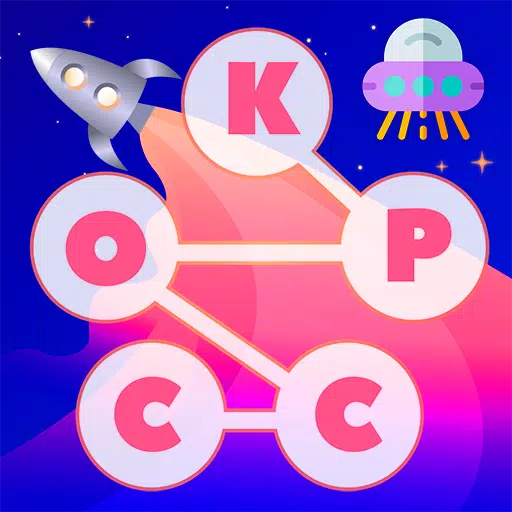Nvidia's DLSS, or Deep Learning Super Sampling, has revolutionized PC gaming since its introduction in 2019. This cutting-edge technology offers significant performance boosts and enhances the longevity of Nvidia's RTX graphics cards, particularly for games that support it. In this comprehensive guide, we'll delve into what DLSS is, how it functions, its evolution across different RTX generations, and why it's crucial for gamers, even those not currently using Nvidia GPUs.
*Additional contributions by Matthew S. Smith.*
What Is DLSS?
Nvidia DLSS stands for Deep Learning Super Sampling, a proprietary system designed to enhance both the performance and visual quality of games. The "Super Sampling" aspect refers to its ability to upscale games to higher resolutions intelligently. Thanks to Nvidia's neural network, trained on extensive gameplay footage, DLSS achieves this without the performance hit you'd expect from manually setting a higher resolution in-game.
Initially focused on upscaling, DLSS now encompasses several systems that improve image quality independently of resolution changes. These include DLSS Ray Reconstruction, which uses AI to refine lighting and shadow quality; DLSS Frame Generation and Multi Frame Generation, which insert AI-generated frames to boost FPS; and DLAA (Deep Learning Anti-Aliasing), which enhances image quality and anti-aliasing beyond what's possible at native resolution.
Super Resolution, the most recognized feature of DLSS, is particularly useful when paired with ray tracing. In supported games, you can select various DLSS modes like Ultra Performance, Performance, Balanced, and Quality. For instance, in Cyberpunk 2077, selecting 4K resolution with DLSS Quality mode allows the game to render at 1440p, which is then upscaled to 4K by DLSS, resulting in higher frame rates than native 4K rendering would allow.
DLSS's neural rendering differs significantly from older methods like checkerboard rendering, often adding detail not visible at native resolution and preserving details lost in other upscaling techniques. However, it can also introduce artifacts such as "bubbling" shadows or flickering lines, though these have been significantly reduced in DLSS 4.
The Generational Leap: DLSS 3 to DLSS 4
With the RTX 50-series, Nvidia introduced DLSS 4, which overhauls the AI model to enhance quality and capabilities dramatically. DLSS 3, including DLSS 3.5 with frame generation, used a Convolutional Neural Network (CNN) trained on vast game data to analyze scenes and spatial relationships. However, with the advancements in machine learning since its 2022 debut, DLSS 4 transitions to a more sophisticated Transformer model (TNN).
The TNN model in DLSS 4 processes twice the number of parameters, allowing for a deeper understanding of scenes and more accurate predictions of future frames. This results in sharper gameplay, improved texture details, and reduced artifacts like bubbling shadows and flickering lines. DLSS 4's Multi Frame Generation can produce up to four artificial frames per rendered frame, significantly boosting frame rates.
To mitigate concerns about input lag, Nvidia pairs DLSS with Reflex 2.0, which reduces latency to maintain game responsiveness. While DLSS frame generation can occasionally introduce minor ghosting, especially at higher settings, Nvidia provides customizable options to match your monitor's refresh rate, minimizing issues like screen tearing and visual artifacts.
Even without an RTX 50-series, you can benefit from the new Transformer model's image quality enhancements through the Nvidia App, which also supports DLSS Ultra Performance mode and DLAA if not natively supported by your game.
Why Does DLSS Matter for Gaming?
DLSS is a game-changer for PC gaming, particularly for those with mid-range or lower-performance Nvidia GPUs. It enables higher graphics settings and resolutions that would otherwise be unattainable, extending the life of your GPU. In an era where GPU prices continue to rise, DLSS helps maintain playable frame rates by adjusting settings or performance modes, making it a valuable tool for budget-conscious gamers.
Moreover, DLSS has spurred competition, prompting AMD and Intel to develop their own upscaling technologies, AMD FidelityFX Super Resolution (FSR) and Intel Xe Super Sampling (XeSS). While DLSS sets a high standard with its superior image quality and frame generation capabilities, these alternatives provide gamers with more options.
Nvidia DLSS vs. AMD FSR vs. Intel XeSS
Nvidia's DLSS faces competition from AMD's FidelityFX Super Resolution (FSR) and Intel's Xe Super Sampling (XeSS). DLSS 4's improved image quality and multi-frame generation capabilities give it a notable edge, despite AMD and Intel's efforts in intelligent upscaling and frame generation. DLSS Super Resolution and Ray Reconstruction typically deliver sharper, more consistent visuals with fewer artifacts.
However, unlike AMD FSR, DLSS is exclusive to Nvidia GPUs and requires game developer implementation. While hundreds of games now support DLSS, alongside FSR and XeSS, availability can vary, and there's no default enablement option.
Conclusion
Nvidia DLSS has transformed the gaming industry and continues to evolve. Its ongoing improvements demonstrate Nvidia's commitment to enhancing gaming experiences and extending GPU longevity. While not perfect, DLSS can significantly impact your gaming, especially when balanced against the cost of GPUs and the specific games you play.
With AMD and Intel offering their own upscaling solutions, the competition is fierce, providing gamers with more choices. As with any PC gaming technology, it's essential to weigh the cost and features of your GPU against the games you enjoy to find the best value for your needs.






























